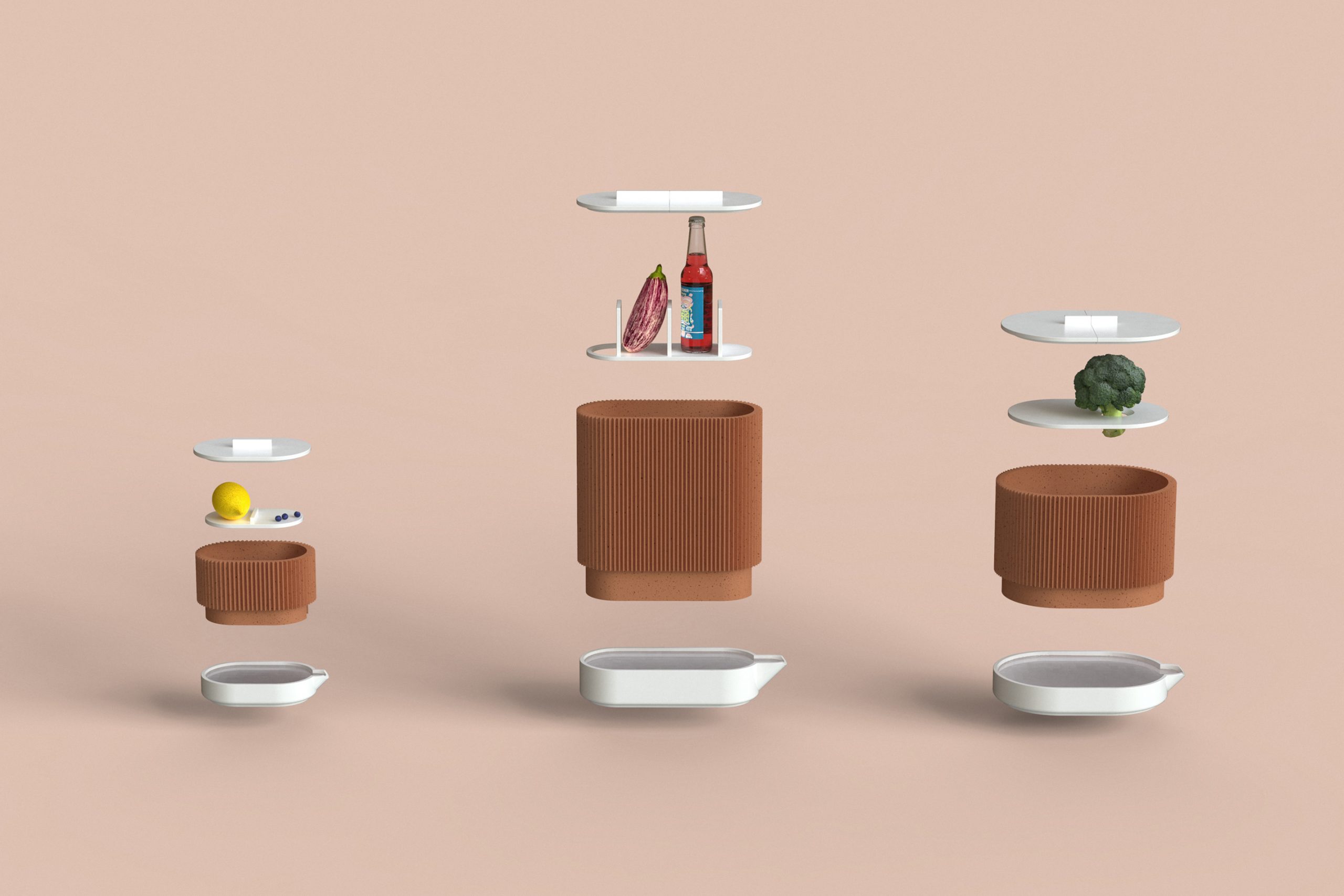COOLING BRICKS

Useful information
- Team members
- Helene Lauppe
- Country
- Germany
- Keywords
- Foodstorage Material Research Clay Evaporative Cooling Fridge Kitchen
Short Description
COOLING BRICKS is a ceramic cooling vessel collection that uses the principle of evaporative cooling
Detailed Description
Kitchen appliances are multiplying in our households. But how much longer can all of these devices be supported by limited resources? How can the volume and complexity of an American refrigerator be reduced to what is necessary? How can traditional cooling methods be adapted to use in contemporary kitchens?
The COOLING BRICKS bring the time-honoured use of evaporative cooling methods into today’s kitchen. Industrial waste materials are mixed with local clay and when the clay is fired they leave capillaries that transport the water upwards. A suitable structure increases the surface area, which allows more water to evaporate. The cooling vessels lower the temperature by up to 10?°C, depending on the external humidity. Due to the cut-outs in the shelves, certain vegetables can be stored directly in the water. The high humidity inside the containers keeps fruit and vegetables fresh, but yoghurt, butter and cheese can also be stored.
Project Details
- Does your design support sustainable production, embodying circular or regenerative design practices?
The COOLING BRICKS series are three modular cooling vessels. They consist of a water bowl, a clay part which absorbs water, evaporates it and thus cools the vessel, a shelf on which the goods to be cooled are placed and the lid. The lid is divided into two parts on the large vessels to prevent an increase in temperature when opened. The white ceramic is fired at 1240 °C to become waterproof. The glaze provides a closed, smooth surface that prevents bacterial growth, is easy to wash and is scratch-resistant. The glazes for these high temperatures do not contain any soluble components (e.g. toxic lead) that can be dissolved during use. Due to the modular construction, broken parts can be replaced. In order to achieve a high capillarity, different industrial waste materials were trialled, with sawdust and residue of paper industry decided on to be used as pore-forming agents. Both are renewable raw materials that are waste products in the industry. They disappear when the clay is fired and thus reduce its weight but not its volume. Clay from a regional clay pit is used in order to use local resources and save transport distances.
When used, the cooling vessels do not require electricity, only water. By saving on electrical appliances a large proportion of energy, electronic waste and the pollutants it contains can be avoided, which endanger health and the environment if not disposed of properly. The ceramic can be recycled, returned to the environment or reused in other products.
- Does your design promote awareness of responsible design and consumption?
The typical domestic fridge offers a large volume of cooled food storage space, which is then filled up according to this size. COOLING BRICKS encourage an approach which considers the specific qualities and storage requirements of the different foods and therefore also a consciousness of the quantity and frequency of purchases. Using COOLING BRICKS encourages more conscious shopping, creating a reorientation from quantity to quality, allowing enjoyment of fresh, well stored food.
From most of the journey from farm to table, food is kept cool within a dense network of centralized refrigerators such as those in supermarkets. Therefore, after purchase, refrigeration at home is largely an unnecessary expenditure of energy. COOLING BRICKS offer a way for the consumer to reduce their energy expenditure and the environmental impact of storing food. For consumers of food which needs to be stored very cold like Meat, fish and fresh milk a small fridge may still be necessary.
Many vegetables such as tomatoes, cucumbers and citrus fruits actually last longer at warmer temperatures. Leafy vegetables benefit from a high humidity. Using COOLING BRICKS, the consumer enjoys fresh food through an increased awareness of the factors of temperature and humidity on food storage and how to achieve that sustainably.
Images


